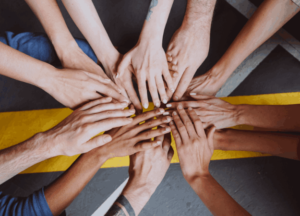The world of work has discarded the deeply embedded traditional office culture (9-5). But it continues to be caught in the debate over redefining workplace flexibility (remote vs. hybrid). Big shifts are driving transformations. Organizations are looking at ways to reimagine a workplace that is more productive by realigning their workforce to being more diverse, equitable, and inclusive. Interestingly, a McKinsey study reveals companies with 30% women in the workforce outperformed companies with fewer women executives. Yet, women continue to be underrepresented in numbers and status at workplaces. Are we getting gender equality and diversity right or are they just good to have policies? More importantly, what does diversity in a Human-first Workplace, the irrefutable reality of tomorrow, look like? Time to dig deep.
Dismantling patriarchy…
Ever wondered why men and women do not compete together at the Olympics?
The answer is obvious. Males have a physically different body structure and are physically stronger than females. This can be attributed to our evolution, think stone-age Flintstones model, where the woman’s role was confined to being a nurturer and homebuilder. While the man with his brute strength brought home the bacon.
With evolution, man, the hunter graduates to man the mason, man the cowboy or man the physical worker. And as workplaces evolve into a manufacturing realm – we are still talking of a predominantly male workforce in workplaces. Slowly, this transformed into offices and desk jobs and that changed everything.
If you’re a woman or know a woman who’s struggling to achieve the work-life balance, read this – Achieving Balance – The tightrope walk for women
Flipping the script from brawn to brains…
The modern workplace with a digital and technological revolution has men and women working side by side because it’s more about brains and not just brawn. Breaking a bevy of barriers in the last 100 years, women are now an active part of workplaces with a seemingly more level playing field.
Gender equality then is all about challenging stereotypes, eradicating dominance, and providing equal opportunities, rights, and responsibilities to people irrespective of gender.
“A gender-equal society would be one where the word ‘gender’ does not exist: where everyone can be themselves.” – Gloria Steinem.

If you hate your job and feel unappreciated, you should read this. – What to do when you feel undervalued at work?
Dissecting diversity…
The hangover of the predominant male mindset still drives the modern workforce – where aggression, competitiveness, risk-taking, being strong and a go-getter, and networking are all valued and required traits to become a successful leader. This leads to a lack of empathy creating an environment unsupportive of women.
Think about this. A woman spends nine hours a day working in the office and eight hours a day at home – the two cultures she is exposed to every day are radically different. In the office, she is expected to behave like men, strong and assertive. At home, she is expected to behave like a traditional woman (read gender conditioning) – caring, empathetic and selfless. This creates an identity conflict making women doubt their own beliefs, and creating psychological distress at work.
If the body of men and women is structured differently and can’t be compared, isn’t it possible that their mind or mental constructs are also wired differently?
The point is- women are inherently different. They often excel in empathy, emotional resilience, nurturing, creativity, communication, collaboration, etc.
Knowingly or unknowingly have most workplaces pushed women to mimic male traits as the road to success thereby modeling the wrong traits to others?
While we espouse diversity, enabling a truly successful diverse workplace is only possible by tapping into the intrinsic strengths of women. By leveraging their God-given strengths, not by getting them to mimic a predominantly male-driven mindset and traits.
Diversity then is not about including more women and expecting them to mimic male traits but rather re-evaluating and transforming the way work is done to utilize the strengths of both genders.
“What we need to do is learn to respect and embrace our differences until our differences don’t make a difference in how we are treated.” – Yolanda King
If you’re a leader who feels that appreciation can make your teammates complacent, read this – The dilemma of appreciation.
Decoding a Human-First Workplace…
This of course means that the current work model may have to be very different and herein comes the approach of Human-First and the concept of Job Sculpting.
Human-Centric Workplaces prioritize the well-being and development of their employees, regardless of gender. By designing jobs that tap into the strengths of individuals (job sculpting), companies can create a more diverse, equitable, and inclusive work environment that benefits everyone.
The evolving role of women in Human-First Workplaces
Since women are likely to be much better managers of people, can resolve conflicts better, and are better at performance conversations, they overall bring in the aspect of Human-First a lot more predominantly.
Supporting women in the workplace through flexible work arrangements, mentorship, and leadership programs tailored to the unique needs and experiences of women, empower them to reach their full potential in the workplace.
At a time when we are rapidly evolving towards a Human-First workplace – jobs have to be crafted and sculpted to allow women to lead with their strengths. And when we succeed in putting a Human-First approach in systems, processes, and human mindsets, the workplace will truly evolve into a diverse and Human-First workplace.
What can you do to make this happen at your workplace?